Dodong Mineral Spring Park (도동약수공원)
2021-08-09
Dodong-ri, Ulleung-gun, Gyeongsangbuk-do
+82-54-790-6454
The spring at Dodong Mineral Spring Park contains minerals known as effective treatments for anemia, digestive disorders, and skin ailments. Legend says the armor of a general who died in war was buried here and the metal infused water is what flows in this spring. Rice cooked with this spring water turns light blue.
Seonginbong Primeval Forest [National Geopark] (성인봉 원시림 (울릉도, 독도 국가지질공원))
2021-04-23
Namyang-ri, Ulleung-gun, Gyeongsangbuk-do
+82-54-790-6182
The foot of Seonginbong Peak is covered with thick primeval forests designated as Natural Monument No. 189. This forest is Ulleungdo Island's only flat area with a diameter of approximately 2 kilometers. It is a caldera formed by volcanic activities and developed over time. The area has many rare plants only found in Ulleungdo Island.
Nari Basin (나리분지)
2021-05-13
Nari-gil, Ulleung-gun, Gyeongsangbuk-do
+82-54-790-6423
Originally a caldera formed on the northern Seonginbong Peak, Nari Basin is the only flatland on Ulleungdo Island. The lava flow from the volcanic eruption created two other craters, which were turned into Nari Village in the northeast and Albong Village, now uninhabited, in the northwest. Records were found that the island was inhabited since the Usan-guk period, but the islanders had to move out of the island in the earlier Joseon period until a new settlement policy was enforced later on.
Bongnaepokpo Falls [Ullengdo & Dokdo National Geopark] (봉래폭포 (울릉도, 독도 국가지질공원))
2024-02-23
Dodong-ri, Ulleung-eup, Ulleung-gun, Gyeongsangbuk-do
+82-54-790-6182
Nestled within the picturesque mountains of eastern Ulleungdo Island, Bongnaepokpo Falls stands as a majestic 30-meter high waterfall. Its formation traces back to the cooling of rocks following a volcanic eruption. This lush region is richly wooded, offering a delightful opportunity for a forest bathing during your hike. Moreover, the deck situated just beneath the waterfall serves as an ideal spot for capturing stunning photographs. Even in the heat of summer, the area remains pleasantly cool, thanks to the gentle breeze that naturally flows through the openings.
Sinseondae Observatory (신선대 전망대)
2022-11-17
San 21-19, Galgot-ri, Geoje-si, Gyeongsangnam-do
+82-55-639-3000
Sinseondae Observatory, located between Dojangpo Maeul and Haegeumgang, offers picturesque views of the fantastically shaped rocks against the deep-blue ocean hues. "Sinseon" in Korean means supernatural beings; the beauty of this spot is said to attract such beings to come frolic. The blue and yellow colors layered on the rocks tell a unique history of the terrain. A stairway from the road leads directly to the lookout point.
Just past a gas station along the coastal highway, Sinseondae Observatory reveals itself. Walking out onto the rocks of Sinseondae, views of the surrounding islands and incredible landscape open up to viewers. Many commercials and TV shows have been filmed here taking advantage of this amazing setting. April and May are the perfect times to see the bright-yellow canola flowers across the island.
Dojangpo Fishing Village (도장포어촌체험마을)
2025-03-15
24-1, Dojangpo 2-gil, Geoje-si, Gyeongsangnam-do
+82-55-638-2202
Dojangpo Fishing Village, located near Sinseondae Cliff and Windy Hill, is a popular attraction especially loved by couples for the beautiful scenery. Sinseondae Cliff is formed of oddly shaped rocks that run in a horizontal line, making it look as if the rocks are holding up the ocean. Other nearby attractions include Yeocha Beach, a filming location of “The Ginkgo Bed (1996);" and Windy Hill, a popular attraction due to its exotic and picturesque green hill.
Geoje P.O.W. Camp Historic Park (거제도 포로수용소 유적공원)
2024-03-06
61 Gyeryong-ro, Geoje-si, Gyeongsangnam-do
+82-55-639-0625
Geoje P.O.W. Camp Historic Park is a park and exhibition hall built on the site of South Korea's largest prisoner-of-war camp, which accommodated up to 173,000 North Korean and Chinese prisoners captured by the South Korean and UN forces during the Korean War (1950-1953). Visitors to the exhibition hall can learn about the Korean War and the lives of prisoners through educational displays and experiences, as well as view war artifacts such as weapons.
Jugam Pebble Beach [National Geopark] (죽암 몽돌해안 (울릉도, 독도 국가지질공원))
2022-08-03
3140 , Ulleungsunhwan-ro, Ulleung-gun, Gyeongsangbuk-do
+82-54-790-6394
Jugam Pebble Beach, located on Ulleungdo Island, is approximatly 500 meters long and 20 meters wide and has round pebbles weathered by the fierce waves. The rough rock and basalt are swept back and forth by strong waves, creating round pebbles.
Okpo Great Victory Commemorative Park (옥포대첩기념공원)
2021-06-08
87, Pallangpo 2-gil, Geoje-si, Gyeongsangnam-do
+82-55-639-8129
Okpo Great Victory Commemorative Park was built in 1996 to commemorate Admiral Yi Sun-sin's first victory of the Okpo Battle during the Imjin War (1592-1598). Visitors can go up the memorial tower and Okporu Pavilion to get an unobstructed view of the Okpo Bay ahead. In addition to the tower and pavilion, the park also has a shrine dedicated to Admiral Yi.
Hwayang Valley (Hwayangdonggyegok Valley) (화양구곡 (화양동계곡))
2019-11-06
78, Hwayangdong-gil, Cheongcheon-myeon, Goesan-gun, Chungcheongbuk-do
+82-43-832-4347
Hwayang Valley, located 32 kilometers east from Cheongju, was designated Songnisan National Park in 1975.
The vivid green mountains and clear waters make it a highly sought after tourist spot. The nearby Seonnyudonggyegok Valley, just 7 kilometers away, is also a huge draw for travelers.
Hwayang Valley is composed of various shaped rocks such as Cheomseongdae Observatory, Neungundae Observatory, Waryongam Rock and Eupgungam Rock. Well-known statesman from the Joseon Dynasty, Song Si-yeol, visited the valley and wept for King Hyojong offering his final bow. This rock where he cried was then named Eupgungam Rock meaning ‘crying bow’ Rock. Waryongam Rock gets its name from its shape, which is said to look like a wriggly dragon. Cheomseongdae Observatory was used in order to forecast weather patterns.
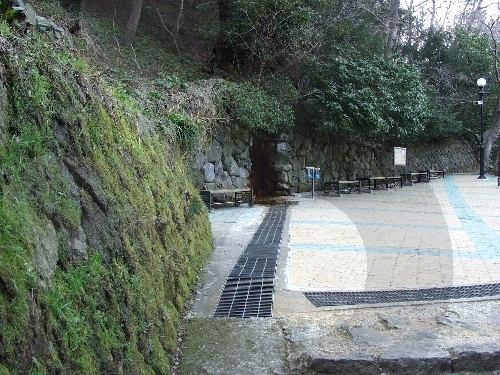
![Seonginbong Primeval Forest [National Geopark] (성인봉 원시림 (울릉도, 독도 국가지질공원))](http://tong.visitkorea.or.kr/cms/resource/57/2370057_image2_1.jpg)
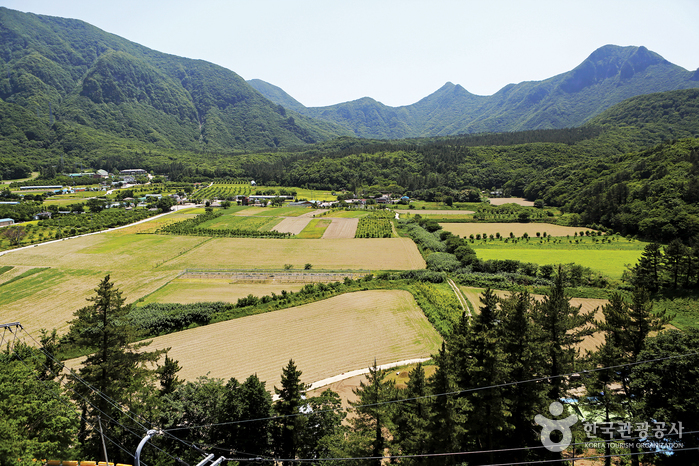
![Bongnaepokpo Falls [Ullengdo & Dokdo National Geopark] (봉래폭포 (울릉도, 독도 국가지질공원))](http://tong.visitkorea.or.kr/cms/resource/28/1893628_image2_1.jpg)
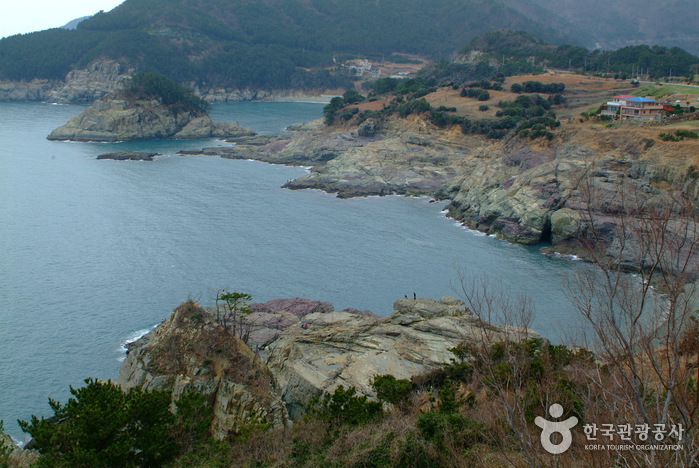
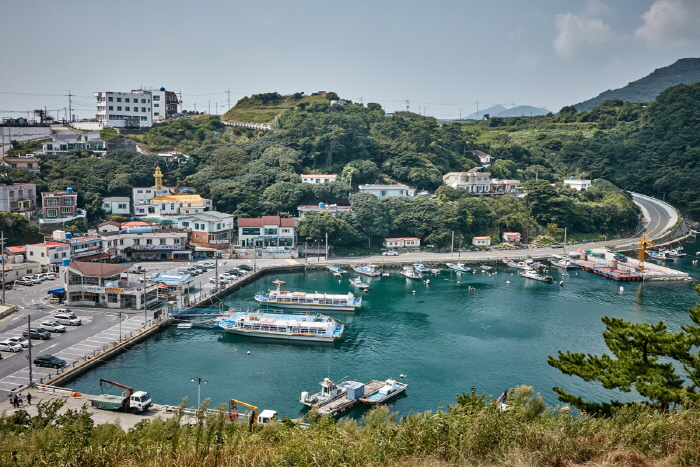
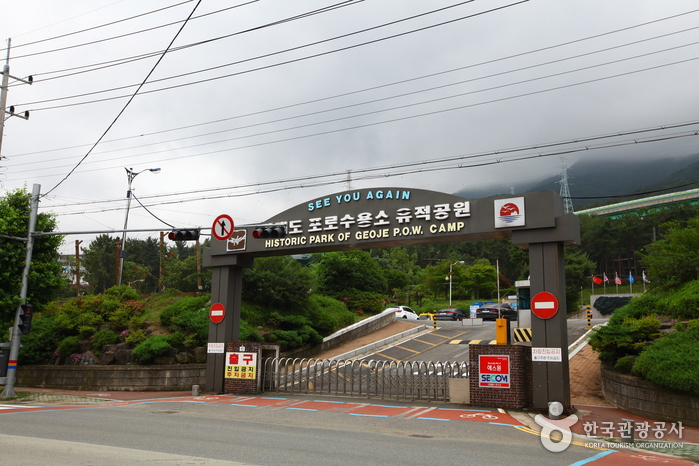

 English
English
 한국어
한국어 日本語
日本語 中文(简体)
中文(简体) Deutsch
Deutsch Français
Français Español
Español Русский
Русский